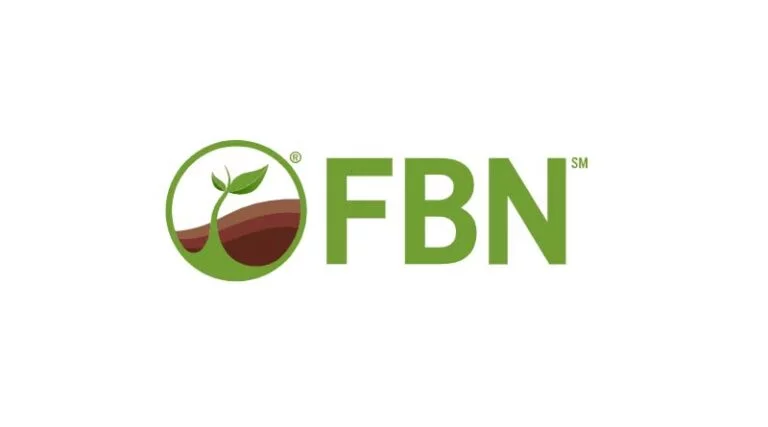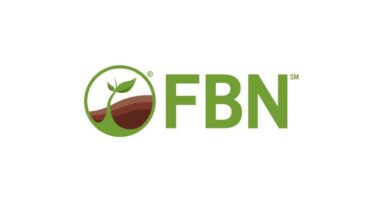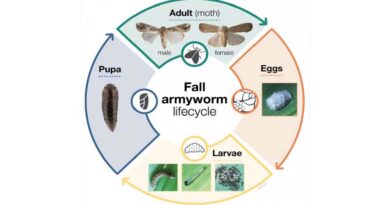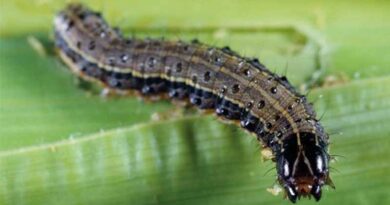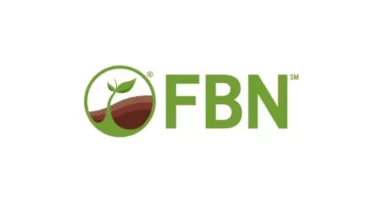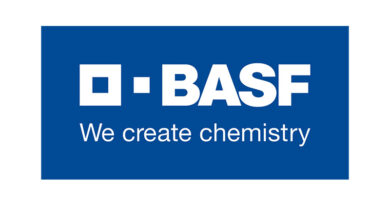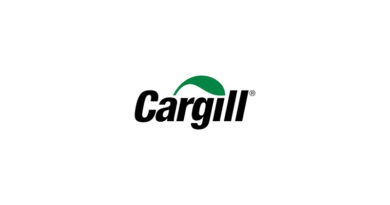How to Decide Whether to Do a Fall Burndown Application
09 August 2023, US: As fall approaches, it’s time to make some crucial decisions for your fields. Deciding whether or not to conduct a fall burndown application has implications for weed pressure, crop rotation, and insect and disease control.
But the benefits of running a fall burndown application mean better future yield potentials and a way to optimize your upcoming planting season.
This post will help you determine whether or not a fall burndown application is suitable for your operation by exploring the following:
- What a fall burndown application is
- The benefits of fall burndown
- Fall burndown best practices
- Tank mix options
- How to find the right fall burndown products
What Is Fall Burndown?
Weeds and vegetation can germinate and grow even after you harvest your main crops, posing a potential problem for the next planting season. Fall burndown application is a technique that involves spraying herbicides on the field after harvest. It targets and controls weeds and unwanted vegetation that could compete with the next season’s crop. Fall burndown also helps with pest management before the winter season sets in.
The Benefits of Fall Burndown
A fall burndown application has several significant benefits contributing to improved crop management and higher yields in the upcoming planting season. Let’s explore three of the main benefits of a fall burndown application.
1. Fall Weed Control
Weeds left unchecked during the fall can become problematic during planting season, so it’s recommended to target active weeds before they reach maturity and produce seeds. This promotes healthier plant growth and can help maximize yields. Fall burndown reduces weed competition and helps control small-seeded winter annuals that become difficult to manage in the spring, including:
- Mustard
- Henbit
- Kochia
- Common Chickweed
- Shepherd’s Purse
- Field Pennycress
- Hairy Bittercress
Plan to target and control perennial weeds before a potentially deadly freeze. Some of these perennials include:
- Canadian Thistle
- Bind Weed
- Canada Goldenrod
- Field Horsetail
- Marestail
2. Weed Seed Bank Reduction
Weeds left uncontrolled during the fall contribute to the weed seed bank in the soil. The weed seed bank refers to accumulated seeds left in the ground from previous weed generations. Reducing this prevents many weeds from reaching the reproductive stage.
Reduced weed pressure creates less competition for nutrients, water and sunlight. The long-term impact of reducing the weed seed bank means the overall seed bank diminishes over time, resulting in improved crop growth and yields. It also prevents the future possibility of problematic weeds from growing. Not only will this make it easier to manage weeds, but it is also more cost-effective.
3. Improved Soil Quality and Crop Residue Breakdown
Fall burndown positively impacts soil health and crop residue breakdown. When herbicides are applied, they facilitate the rapid decomposition of crop residues from the previous harvest to allow organic matter to break down and release nutrients back into the soil. This enhances soil fertility and promotes optimal growing conditions.
Burndown also prevents residue-related problems such as inadvertently creating a slug habitat and harboring diseases . A clean seedbed improves seed-to-soil contact and also provides an opportunity to tank-mix a BioStimulant to stimulate natural microbial activity in the soil.
4. Pest and Disease Management
Beyond weed control, fall burndown also aids in pest and disease management. Certain insects overwinter in crop residues or weeds, threatening the next planting season. Reducing vegetation reduces the risk of these pests, contributing to healthier crops and potentially reducing the need for future pesticide applications.
Similarly, a fall burndown application can also prevent plant diseases from overwintering in crop residues or infected plant debris. Reducing the initial disease inoculum limits the number of pathogens that can infect the next crop. Incorporating a fall burndown application into your integrated pest management (IPM) strategy also allows you to adopt a more sustainable pest and disease management approach.
Best Practices For Fall Burndown
Employing best practices during fall burndown ensures effective weed management and maximizes crop performance. To develop a successful fall burndown strategy, be sure to consider:
- Crop rotation
- Trait selection
- Field scouting
- Timely action
Crop Rotation
Consider the crop rotation you have planned for the next season. Some crops may benefit from a clean start without weed competition.
Rotate crops with different growth habits, nutrient requirements and pest susceptibilities. This will break pest and disease cycles and reduce weed pressures. Avoid planting the same crop in consecutive years on the same field. Also be mindful of residual herbicide effects on the next crop in rotation and consider selecting products with shorter residual activity if necessary.
Trait Selection
Trait selection is a critical part of your crop planning strategy. Select crop varieties or hybrids with traits like herbicide resistance, pest resistance and drought tolerance that align with your operation’s specific needs and challenges.
Herbicide Resistance
Herbicide-resistant crops target problematic weeds, providing effective weed control and minimizing damage to the crop. These crops typically require fewer herbicide applications, leading to cost savings and a reduced environmental impact.
Pest Resistance
Trait selection can also address other challenges like pest management. Crop varieties with pest resistance reduce the need for chemical pesticides and promote healthier crops and better yields. Embracing pest resistance supports better-integrated pest management practices and promotes sustainable ag practices.
Drought Tolerance
Drought tolerance enables crops to withstand and survive water scarcity and reduced rainfall. These crops require less irrigation, preserve water resources and allow farmers to cope with climate variability while still achieving consistent yields. Examples of drought-tolerant crops include:
- Sorghum
- Chickpeas
- Lentils
- Quinoa
- Sunflowers
- Barley
- Amaranth
Field Scouting
Walk through your field to assess and document the types of problem weeds present. You will better understand weed management techniques by establishing the weed species, density and distribution. Identifying challenging and competitive weeds will help you select the appropriate herbicides for effective weed management.
Fall Burndown Application Timing
While the exact timing of a fall burndown application will vary based on the region, crop type and weather conditions, you should ideally schedule the application immediately after harvesting the main crop. This ensures herbicides are applied when winter weeds and unwanted vegetation are actively growing and more susceptible to control efforts.
Temperature plays a vital role in successful herbicide application. When applied at temperatures between 40°F to 60°F, weeds may take longer to kill. If the temperature drops below 40°F for an extended period of time after application, the cooler temperatures can reduce weed control effects because. products like glyphosate and 2,4-D are absorbed more slowly in cooler weather than at higher temperatures.1
Avoid using herbicides during rainy periods or if you expect precipitation within 24-48 hours after application. It’s also best to avoid spraying in windy conditions to minimize spray drift which can damage nearby crops.
Tank Mixing Options
What’s in your tank will play an important role in fall burndown applications. By combining multiple herbicides with different modes of action, you’ll address a broader spectrum of weeds, including some resistant to individual herbicides. This approach also ensures more control over the existing weed population and saves time by reducing the number of field passes required to make an application impactful.
Tank mixing also provides greater flexibility in weed management, allowing farmers to tailor their herbicides combination to specific weed challenges and environmental conditions.
Find the Right Herbicides For Fall Burndown
Choosing suitable herbicides for your fall burndown application will set you up for success during the next planting season. FBN Direct® has a wide variety of effective herbicides to help control weeds and keep your operation on track. With transparent pricing, detailed product labels and direct-to-farm delivery, FBN Direct can help you make the right decision for your fall burndown strategy.
U.S. Products for Fall Burndown
For farmers in the U.S., here are some popular products that can be paired as recommended or required based on each product label:
| Product | Pair With | Notes |
| Atrazine 4L Value Pick* | IN-Plant or In-Zorb 90 | Adjuvant is FBN® Suggested |
| 2,4-D LV6 Value Pick | Tether 24 | An Adjuvant is label recommended. |
| Willowood Sulfen 4SC | IN-Plant or IN-Plant ADV | An Adjuvant is label recommended. |
| Willowood Paraquat 3SL* | IN-Plant or In-Zorb 90 | An Adjuvant is label required. |
| Willowood Clethodim 2EC | IN-Plant or IN-Plant ADV | An Adjuvant is label required. |
| Willowood OxyFlo 2EC | IN-Plant | An Adjuvant is label recommended. |
Canadian Products for Fall Burndown
For Canadian farmers, here is a list of popular products to help with a fall burndown application:
- Smoke 540 Glyphosate Value Pick
- FBN Diquat 240 SN
- 2,4-d Ester 700 Value Pick
- MCPA Ester 600 Value Pick
- Maxunitech Carfentrazone-ethyl 240EC Herbicide
- Florasulam 50 Value Pick
- FALCON® Surfactant
- Icon® Surfactant
Also Read: Bayer, GenZero, and Shell collaborate to reduce methane emissions in rice cultivation
(For Latest Agriculture News & Updates, follow Krishak Jagat on Google News)

